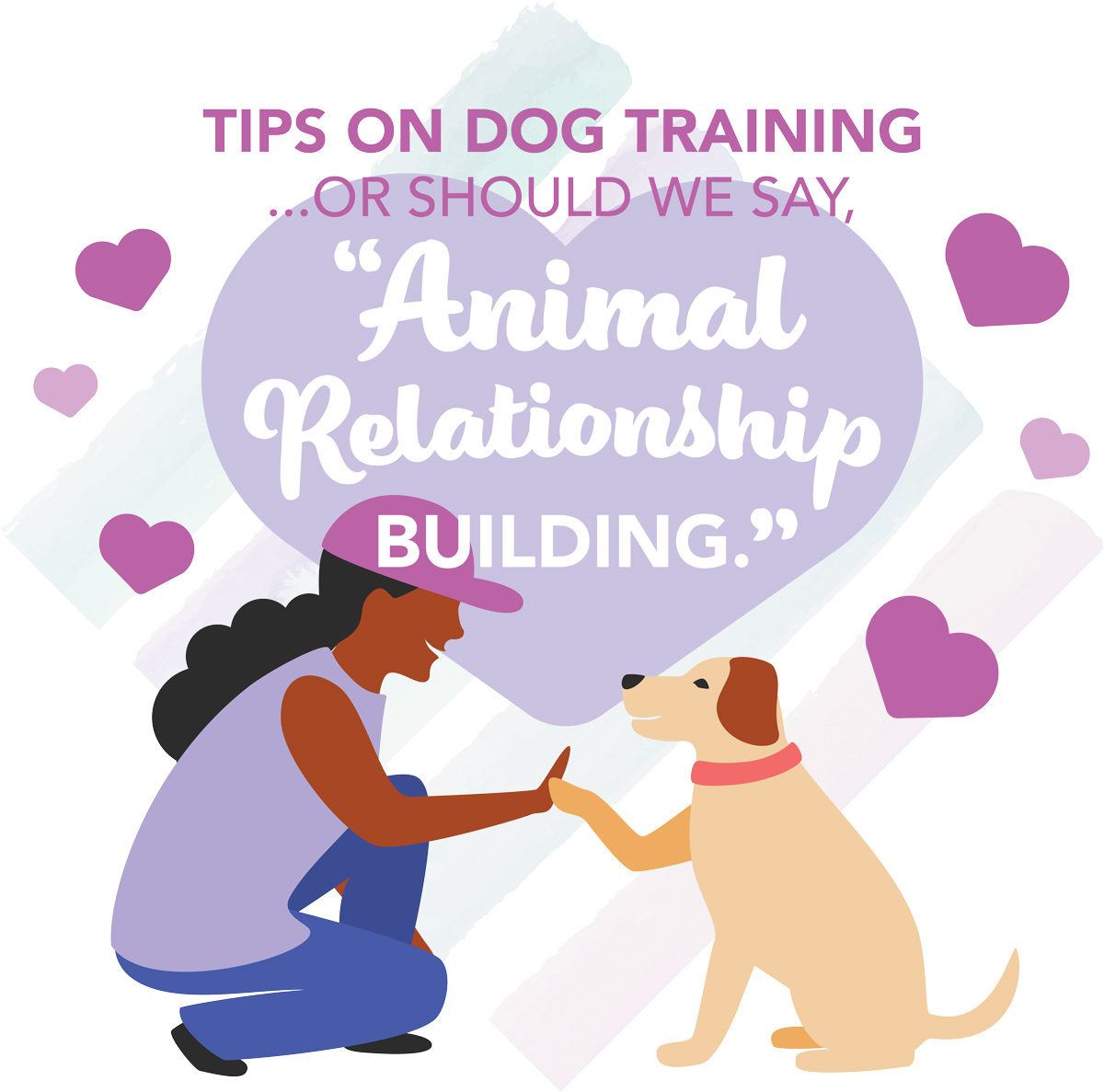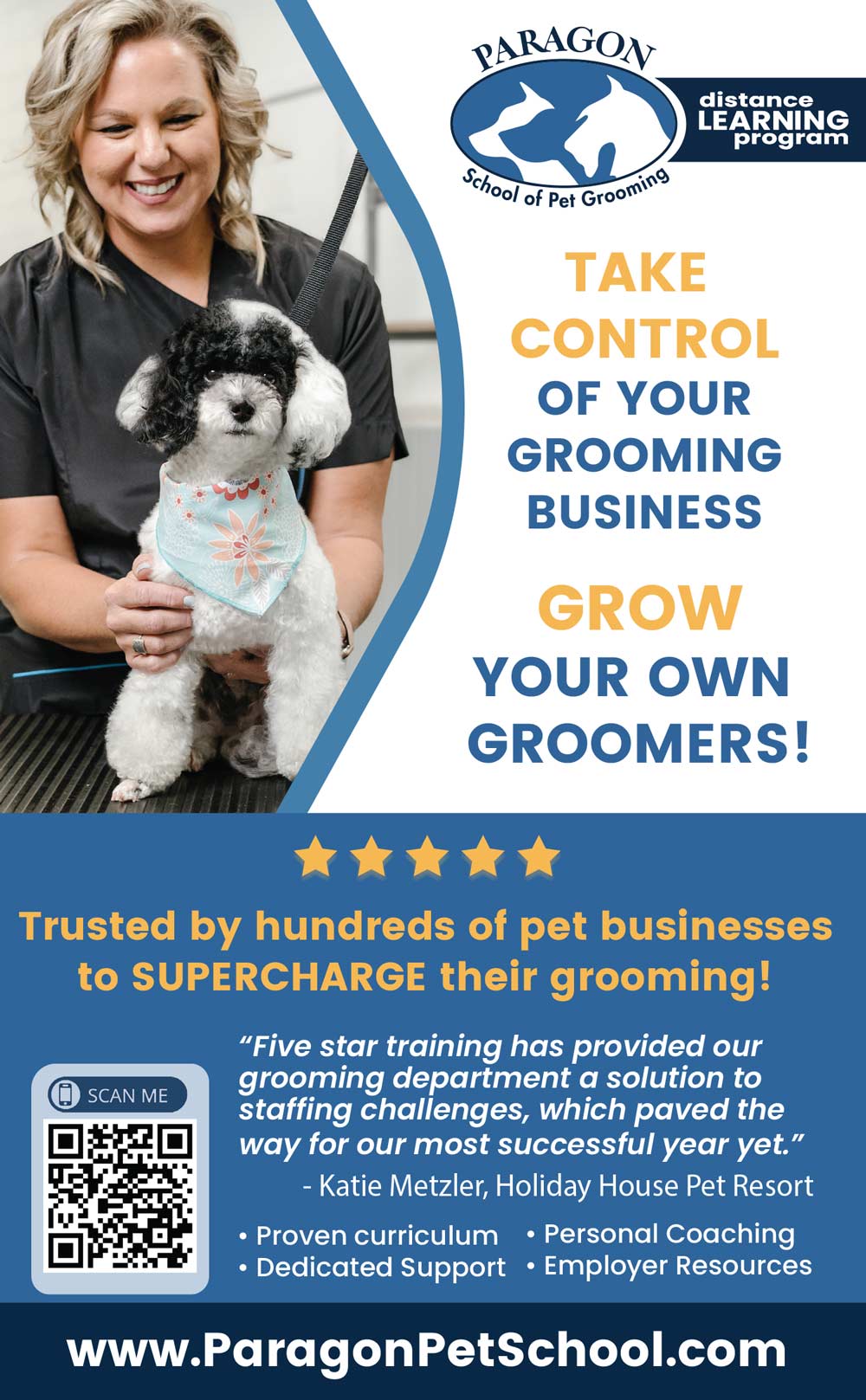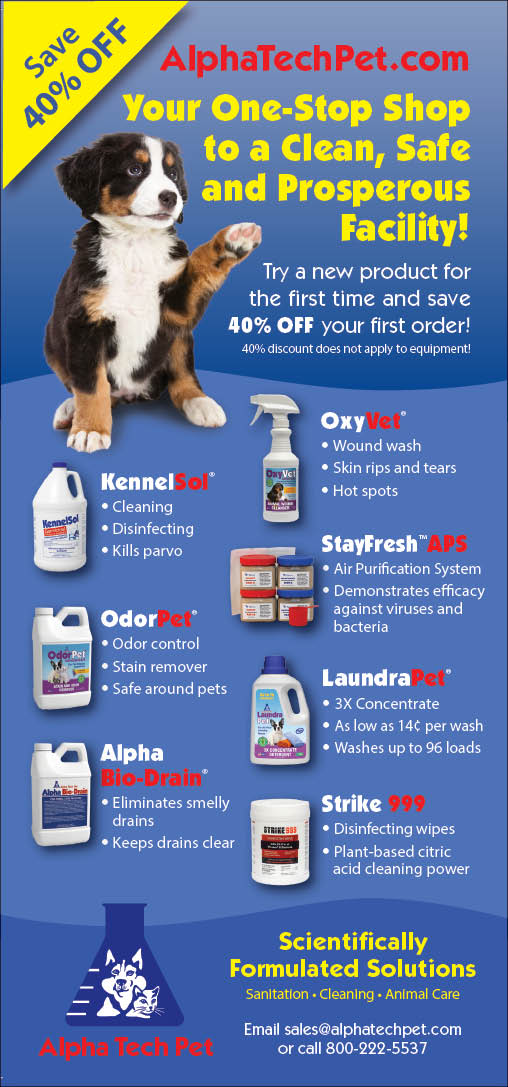
 hen you say “dog training” to people, sometimes it’s like saying, “I’m gonna go workout at the gym”—something they don’t necessarily enjoy or want to do. If you’re an athlete training for a race, or if you start a new job and are in training, you’re probably going to put in a bunch of effort upfront and then you drop down and maintain it over the course of the years. Similarly, we need to help people change their mindset on dog training so that they realize if they put in maximum effort upfront, it should lead to major rewards down the line.
hen you say “dog training” to people, sometimes it’s like saying, “I’m gonna go workout at the gym”—something they don’t necessarily enjoy or want to do. If you’re an athlete training for a race, or if you start a new job and are in training, you’re probably going to put in a bunch of effort upfront and then you drop down and maintain it over the course of the years. Similarly, we need to help people change their mindset on dog training so that they realize if they put in maximum effort upfront, it should lead to major rewards down the line.
Unfortunately, many people are still stuck in that old school concept that training is going to be boring and mundane. There are tons of trainers out there that have created fun, exciting programs using games and enjoyable experiences to build the bond between the dog and their human. And that’s what it comes down to—all training starts with the bond.
If you don’t have a bond with your animal, then they’re not going to listen to you…even if you have the softest, stinkiest, most delicious treats ever. (Or they’ll listen to you for that second, and then forget you afterwards.) It’s a relationship, and that is exactly what training is all about. In fact, we should just change “dog training” to “animal relationship building.”
Think of it like couples therapy. When dogs come in for training with their humans (or without their humans), whether you’re doing classes or a board-and-train, it is all about building that relationship. And typically we start that with food. We feed them from our hands. We use good, stinky treats because we want them to know that great things come from us humans, and if they pay attention to us, then even better things are going to come next.
Training needs to be fun! It’s simple for pet parents to continue to work with their dog right at home. Family members can take a few treats (or bits of kibble) and hide in each room in the house and call the dog’s name. Involve the kids!


Training needs to be fun! It’s simple for pet parents to continue to work with their dog right at home. Family members can take a few treats (or bits of kibble) and hide in each room in the house and call the dog’s name.
They want their dog to walk on a loose leash? They can walk up and down the hallway at home, saying the dog’s name and giving it a reward every time it looks at them. Create the fun off leash, and they’re going to have fun on leash. They just need to keep it in perspective.
As a kid, when your mom called your name in a high-pitched voice (“Sally, come here!”), you thought, “Oh, must be something fun!” But if she called your name in a deep voice, you knew you were in trouble (but probably didn’t stop what you were doing to see what she wanted). If pet parents say things in a negative tone, the dog’s likely going to keep doing whatever they’re doing wrong, like digging holes in the backyard.
The trainer (or pet parents) can reuse items from home to create some agility equipment, like a training platform or sturdy cot to do some parkour to help the dog trust the human who is leading them. Flashcards on the floor or on the ground telling the humans what task to perform with their dog is great when you have a big open space—zig-zag walk to the next card, walk fast, walk slow, step aside and do a sit/stay as someone walks by. By creating these scenarios, it helps the pet parents relax as they know what is happening. It also allows the owner to get out of their head so they are not transferring any anxiety through the leash.
Asking pet parents to spend time is always the hard part, so breaking it down into what the needs are for the short term and going over what to expect to do in the long term is beneficial.
For puppies, you’ll want to do short, little training sessions multiple times a day. Small spurts of repetitive training creates a habit. So, if I’m working a puppy, I might do a 10-15-minute training session, then they get 15-20 minutes of fun and then an hour of rest, and repeat that four to five times a day.


For older dogs, you can extend out longer training sessions to work on behavior issues. If an older dog is jumping up on people or needs to work on loose-leash walking, that would be a longer session of 30-40 minutes, then 15-20 minutes of fun time and an hour of rest, and I repeat that at least three times a day. I might put the fun time first if it’s a highly energetic dog, like doing some scent games or something interactive to build them up and then ask them to work.
We always start every training session with obedience, so we work on (or review) sit, wait, come when called and some name games. We start it the same, so that way the dog remembers, “Oh yeah, I know what we’re doing now.” You’ve set the expectation with the dog for what you’re doing.
It’s just like if you work in an office, you put on your nicer shoes and your nicer clothes and that sets your mind for, “I’m going into the office to work.” Versus when you come home, you put on your sweatpants and sweatshirt, switching to the mindset of, “I’m going to veg out on the couch and binge Netflix.” So, you can also create a “time to work” pattern and routine with the dog when it’s time to work. Making sure the dog gets in the habit of knowing when we are going to do something versus free choice time is important within your training concept.
There will be times when you need to untrain habits and behaviors that already have the dog in that mindset. If you hook the leash up to the dog and the dog’s thinking, “Yes, we are going for a walk!” and it starts bouncing off the walls to go outside, in those situations, you need to reverse your training. To untrain that behavior, I hook a cheap leash on the dog, walk away and let the dog drag the leash around. I’m taking away what comes next—the predicator to the action.
Another trick that you could do is put the leash on the dog, drop it and then again work on some obedience. Or, if you have two exits, walk out the other exit (not the one the dog typically uses for their walks). When you have a dog that is overly excited with what you’re doing, then you need to change it up! Switch up your routine.
I have some clients that have multiple leashes and the dog gets to the point that it knows which leash is for which purpose—the seatbelt buckle leash means we’re going for a ride; the long line leash means we’re going for a hike. Each leash could mean something different, but the key is getting the dog not to predicate what comes next if it leads to a bad behavior such as running out the door or jumping on you.
When thinking about the mindset of the dog, setting them up for success means predicating the behavior and the stimulus. Service dogs are a great example of this—when their vest is on, they know that they’re in work mode; when their vest is off, they know they have a little more free choice. You’ve predicated the good behavior. You’ve just determined when it is time to go to work specifically. A lot of this really mirrors human behavior.
When you’re talking to your clients about continuing and reinforcing their dog’s training at home, it may help to tell them, “Put in a little bit of work now, and get some great rewards later.” The client can dedicate 20 minutes a day for the next two weeks, and then reduce that to 20 minutes a day three times a week, and then 20 minutes a day two times a week. So, within 30 days, they can get their dog on the right path toward that mindset while creating a great relationship.
Eve Molzhon is the creator and owner of Dog Handler Academy. Dog Handler Academy is a 100% online, automated employee training program designed specifically for dog daycares and boarding facilities. Our real-life daycare videos and online quizzes fast-track your team members into understanding dog handling and care, saving you time and money. Courses cover basic and advanced dog handler skills, social cues and safety, client relations, and more. The mission of Dog Handler Academy is to provide employers with comprehensive training material in a cost-efficient, consistent, and effective program. Our end goal is to create better handlers within our industry to ensure the proper care of animals.




